Today’s Current Affairs:10th October 2025 for UPSC IAS exams, State PSC exams, SSC CGL, State SSC, RRB, Railways, Banking Exam & IBPS, etc
Table of Contents
Plutonium Management and Disposition Agreement:
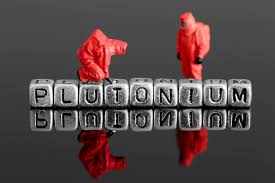
Russia moves to withdraw from plutonium agreement with the United States.
- Plutonium Management and Disposition Agreement (PMDA) is an agreement between the United States and Russia signed in 2000.
- It came into force in 2011.
- It aimed at reducing vast stockpiles of weapons-grade plutonium left over from thousands of Cold War nuclear warheads.
- After dismantling thousands of warheads after the Cold War, both Moscow and Washington were left with huge stockpiles of weapons-grade plutonium which was costly to store and posed a potential proliferation risk.
- The aim of the PMDA was to dispose of the weapons-grade plutonium, by converting it into safer forms – such as mixed oxide (MOX) fuel or by irradiating plutonium in fast-neutron reactors for electricity production.
- It committed both the United States and Russia to dispose of at least 34 tonnes of weapons-grade plutonium each.
- Russia in 2016 suspended implementation of the agreement, citing U.S. sanctions and what it cast as unfriendly actions against Russia, NATO enlargement, and changes to the way the United States was disposing of its plutonium.
- Russia said at the time that the United States had not abided by the agreement after Washington moved, without Russian approval, to simply dilute the plutonium and dispose of it.
Subansiri Upper Hydroelectric Project:
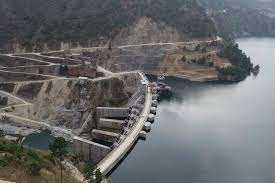
Hundreds recently protested in Daporijo, Arunachal Pradesh, against the proposed 2,000 MW Subansiri Upper Hydroelectric Project.
- It is a 1,800 MW hydropower project.
- It is a run-of-the-river project planned on the Subansiri River basin in Arunachal Pradesh.
- It is expected to enter into commercial operation in 2031.
- The project is being developed by KSK Upper Subansiri Hydro Energy and is currently owned by KSK Energy Ventures.
- The gross head of the project will be 199.5 m.
- The project is expected to generate 6,581.29 GWh of electricity. The project cost is expected to be around $2,346.87m.
- It is a Trans-Himalayan river originating from the western part of Mount Porom (5059 m) in the Tibetan Himalaya. (Kangig glacier range in Tibet)
- It is also called the Gold River, the Subansiri River is famous for its gold dust.
- It enters into the plains of Assam through a gorge near Gerukamukh.
- It is the right-bank tributary of the Brahmaputra. It joins the Brahmaputra River in the Lakhimpur district of Assam.
- It flows through Assam, Arunachal Pradesh, and the Tibet Autonomous Region of China.
- Major tributaries of the river are Laro, Nye, Yume, Tsari, Kamla, Jiyadhol, Ranganadi and Dikrong.
Bridgeoporus kanadii:
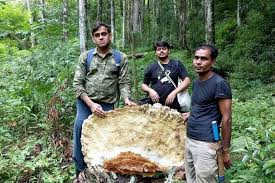
From the forests of northeast India’s Arunachal Pradesh state, researchers have described a new-to-science species of fungus named Bridgeoporus kanadii.
- Bridgeoporus kanadii is a new species of fungi discovered in Arunachal Pradesh.
- It has exceptionally large fruiting bodies that can hold the weight of a person. Some fruiting bodies measured over three meters in radius.
- The species is named in honor of Indian mycologist Kanad Das for his contributions to Indian macrofungi.
- The only other known species in Bridgeoporus, B. nobilissimus, is native to North America and has fruiting bodies up to about 1.5 meters. B. kanadii doubles that in size.
- Bridgeoporus fungi play a vital role in forest regeneration by helping to decompose dead wood.
- Most of the B. kanadii the researchers spotted in Arunachal Pradesh were growing on dead fir trees.
- Though the fungus is massive and visually striking, it is inedible and offers no direct economic use.
Damodar River:
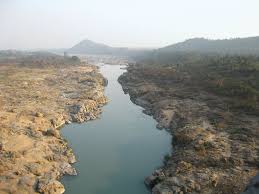
In what locals have described as a miraculous escape, a 65-year-old woman who was swept away by the swollen Damodar River was rescued nearly 45 km downstream in West Bengal recently.
- The Damodar River flows through the states of Jharkhand and West Bengal.
- Located in the eastern part of the Indian subcontinent, it is an important part of the Ganges River System.
- The river is also known as the “Sorrow of Bengal” because of its devastating floods in the plains of West Bengal.
- It originates from the Palamau hills of Chota Nagpur in Jharkhand.
- From its source, the river flows in a southeastern direction, passing through the Chota Nagpur Plateau, a region known for its rich mineral deposits.
- In its lower course, it flows through West Bengal’s plains and is joined by several tributaries.
- Finally, the Damodar River meets the Hooghly River at Shayampur, which is 48 km from Kolkata.
- Damodar Valley Project is a significant river valley project in Eastern India, implemented to supply hydroelectric power to West Bengal and Bihar, as well as to prevent floods
- The project is operated by the Damodar Valley Corporation (DVC), an undertaking of the Indian Government established in July 1948.
- It is situated on the Konar River in the district of Hazaribagh in Jharkhand.
Crohn’s Disease:
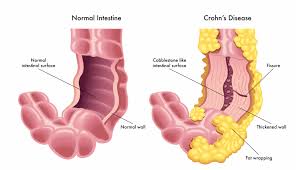
Recent research suggests that diets high in ultra processed foods (UPFs) may worsen inflammation in the gut and raise the risk of Crohn’s disease flare ups.
- Crohn’s Disease is a chronic inflammatory bowel disease (IBD) that causes swelling and irritation of the tissues, called inflammation, in the digestive tract.
- It can affect any part of the digestive tract. But it usually affects the small intestine and the beginning of the large intestine.
- The inflammation often spreads into the deeper layers of the bowel.
- Crohn’s disease can be both painful and debilitating. Sometimes, it may lead to serious or life-threatening complications.
- The symptoms of Crohn’s disease can vary, depending on where and how severe your inflammation is. The most common symptoms include:
- Diarrhea
- Cramping and pain in abdomen
- Weight loss
- It is more likely to develop in people between the ages of 20 and 29.
- Experts aren’t sure what causes Crohn’s disease but think genes, abnormal immune reactions, and the microbiome play a role.
- There’s no known cure for Crohn’s disease, but therapies can greatly reduce its symptoms and even bring about long-term remission and healing of inflammation.
- With treatment, many people with Crohn’s disease can function well.
Mera Hou Chongba Festival:
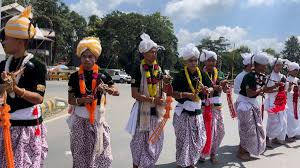
The Mera Hou Chongba festival, which symbolises Hill-valley unity was celebrated in Manipur.
- Mera Hou Chongba Festival is celebrated in Manipur on the 15th lunar day of the Mera month of the Meitei calendar every year.
- The festival’s historical roots are believed to date back to the time of Nongda Lairen Pakhangba, a legendary early ruler of Manipur.
- Manipur titular King lead a ritual march involving tribal village chiefs from the Manipur Royal Palace to the historic Kangla, where traditional rituals, including Mera Thaomei Thanba (lighting of the ceremonial fire) and Mera Yenkhong Tamba (exchange of gifts).
- The festival will culminate with a showcase of cultural dances and a grand feast marking the brotherhood among different tribes in the state.
- It is the only festival in Manipur in which all indigenous communities participate, and it has a significant importance in the unity and communal harmony of Manipur.
Paramyrothecium strychni:
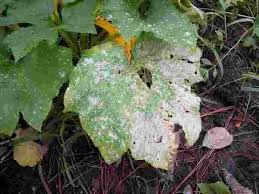
Scientists have discovered a new species of phytopathogenic fungus, Paramyrothecium strychni (Ascomycota, Stachybotryaceae).
- It is a fungus species associated with an emerging leaf spots and blights disease of Strychnos dalzellii(Family-Loganiaceae).
- This new species has been discovered and established on the basis of morpho-cultural and multigene molecular phylogenetic evidence.
- According to Index Fungorum, a total of 25 species of Paramyrothecium are recognized worldwide, and most of them are reported as plant pathogens.
- Species of Paramyrothecium mostly causes leaf spots and blights in all kind of plants.
- Strychnos dalzellii is an endemic medicinal plant of the Western Ghats.
- It is valued for its alkaloids with analgesic, anti-inflammatory, and antimicrobial properties. Traditionally, it is used in treating fever, digestive disorders, rheumatism, and nervous ailments.
- Strychnos dalzellii is locally known as Kanjiram or Modirakanjiram.
- Conservation Status: It is categorised as Vulnerable (VU) under the IUCN Red List.
- Threats: Habitat degradation, and overexploitation.
PM-KUSUM Scheme:
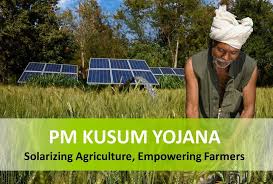
The Union government is looking to showcase the PM-KUSUM (Pradhan Mantri Kisan Urja Suraksha evam Utthan Mahabhiyan) programme to several African countries and island nations by using the International Solar Alliance platform.
- It was launched in 2019 with the objective to provide energy and water security to farmers, enhance their income, de-dieselize the farm sector, and reduce environmental pollution.
- Target is to add Solar capacity of about 34,800 MW by March 2026.
- Nodal Ministry: Ministry of New and Renewable Energy (MNRE).
- The eligible categories for KUSUM Scheme are:
- An individual farmer.
- A group of farmers.
- FPO
- Co-operatives.
- Water User Associations.
- Components of PM-KUSUM Scheme:
- Component A: Setting up of 10,000 MW of Decentralized Grid Connected Renewable Energy Power Plants on barren land. Under this component, renewable energy based power plants (REPP) of capacity 500 kW to 2 MW will be setup by individual farmers/ group of farmers/ cooperatives/ panchayats/ Farmer Producer Organisations (FPO)/ on barren/fallow land. The power generated will be purchased by the local DISCOM at a pre-fixed tariff determined by the respective State Electricity Regulatory Commission (SERC). The renewable energy power project will be installed within a five km radius of the sub-stations.
- Component B: Installation of 20 lakhs of standalone Solar Powered Agriculture Pumps. Individual farmers will be supported to install standalone solar Agriculture pumps of capacity up to 7.5 HP for the replacement of existing diesel Agriculture pumps / irrigation systems in off-grid areas, where grid supply is not available.
- Component C: For Solarisation of 15 Lakh Grid Connected Agriculture Pumps. Under this Component, individual farmers having grid connected agriculture pumps will be supported to solarise pumps. The farmer will be able to use the generated solar power to meet the irrigation needs and the excess solar power will be sold to DISCOMs at pre-fixed tariff.
Income Tax Appellate Tribunal:
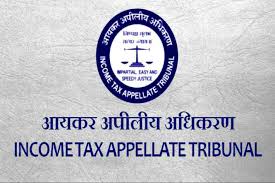
The Chief Justice of India praised the Income Tax Appellate Tribunal (ITAT) for its significant contribution to the justice delivery system which marked its 84th anniversary.
- It is a quasi-judicial institution set up in January, 1941 and specializes in dealing with appeals under the Direct Taxes Acts.
- It was started in 1941 with six Members constituting three Benches – one each at Delhi, Kolkata (Calcutta), and Mumbai (Bombay).
- Presently ITAT has 63 Benches at 27 different cities, covering almost all the cities having a seat of the High Court.
- It functions under the Ministry of Law and Justice.
Composition of Income Tax Appellate Tribunal:
- The President of the ITAT constitutes a bench from among the members of the ITAT.
- Each bench has an accountant member and a judicial member.
- In some cases, a special bench with three or more members may be constituted to dispose of income tax appeals.
Functions of Income Tax Appellate Tribunal:
- It hears appeals concerning orders passed by the income-tax authorities.
- It adjudicates appeals made under the Income Tax Act of 1961.
- ITAT serves as the final fact-finding body in tax disputes, offering both taxpayers and the income tax authorities a convenient platform to resolve disputes.
- It is the second forum to hear income-tax appeals after the Commissioner of Income-tax (Appeals)
- ITAT functions under the regional High Court’s jurisdiction and must adhere to the rules of the same.
- ITAT is subordinate to both the region’s High Court and the Indian Supreme Court.
Appeal in ITAT:
- A tax appeal can be filed by a taxpayer who does not agree with the assessment order or any other order, passed by an income-tax authority.
- An appeal before the ITAT is generally filed by the taxpayer to contest any order passed by the Commissioner of Income-tax (Appeals).
- Similarly, an income-tax department can also file an appeal against any order passed by the Commissioner of Income-tax (Appeals) before the ITAT.
- The orders passed by the ITAT are final. An appeal lies to the High Court only if a substantial question of law arises for determination.
Foreign Currency Settlement System:
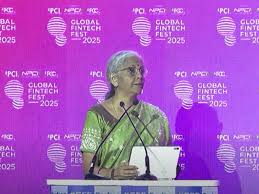
The Union Finance Minister launched a Foreign Currency Settlement System (FCSS) at the International Financial Services Centre (IFSC) in Gujarat International Finance Tec-City (GIFT City).
- It is established under a comprehensive legal and regulatory framework of the Payment and Settlement Systems Act, 2007.
- It is authorised by International Financial Services Centres Authority (IFSCA).
- It enables foreign currency transactions between IFSC Banking Units (IBUs) to be settled locally instead of routing through the traditional correspondent banking route.
- It provides a structured framework for the settlement of foreign currency transactions, enabling market participants to process cross-border payments with greater speed, reliability, and legal certainty.
- Initially, the system will support US dollar transactions, with scope to add other foreign currencies over time.
- It is operated by the CCIL IFSC Limited (CCIL IFSC), a subsidiary of Clearing Corporation of India Limited.
- Currently, foreign currency transactions in GIFT IFSC are processed via correspondent banking routes i.e through multiple Nostro account relationships (accounts held with foreign banks) and intermediaries to route funds.
- That chain of relay can lead to settlement lags of 36 to 48 hours.
International Financial Services Centres Authority:
- It is a statutory authority established under the International Financial Services Centres Authority Act, 2019.
- The IFSCA is a unified authority for the development and regulation of financial products, financial services, and financial institutions in the International Financial Services Centre (IFSC) in India.
IAF to Receive First Tejas Mk1A Fighter Jet:
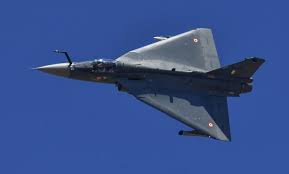
The Indian Air Force (IAF) is set to receive its first Light Combat Aircraft (LCA) Tejas Mk1A, marking a significant milestone in India’s indigenous fighter jet programme.
Tejas Mk1A
- The Tejas Mk1A is an upgraded variant of India’s Light Combat Aircraft (LCA) Tejas, developed by Hindustan Aeronautics Limited (HAL).
- This version is aimed to enhance operational and combat capabilities, survivability and maintainability over the baseline Mk1.
- Capabilities:
- Active Electronically Scanned Array (AESA) radar integration.
- Electronic Warfare Suite (EWS) — radar‑warning and self‑protection jamming.
- Upgraded Flight Control Computer (DFCC Mk1A) for better maneuverability and stability.
- Missile compatibility- Beyond Visual Range (BVR) missiles, Air-to-Air and Air-to-Ground missiles and Advanced Short Range Air-to-Air Missiles (ASRAAM).
- Planned integration of Combined Interrogator and Transponder (CIT), Software Defined Radio (SDR) and Operating Data Link (ODL) with existing onboard avionics.
LCA Tejas
- The LCA Tejas programme, initiated by the Government of India in 1984, aimed to replace the ageing MiG-21 fighter jets. The programme is managed by the Aeronautical Development Agency (ADA).
- Features:
- Lightest, smallest, and tailless multi-role supersonic fighter in its class.
- Capable of carrying a variety of air-to-air, air-to-surface, and precision-guided weapons.
- Maximum payload capacity of 4000 kg.
- Maximum speed: Mach 1.8.
- Range: 3,000 km.
Gender-Affirming Care:

A recent article highlights the urgent need for Gender-Affirming Care (GAC) in India, emphasizing its crucial role in improving mental health and dignity for transgender and gender-diverse individuals.
- GAC refers to a range of medical, psychological, and social interventions that help individuals align their gender identity with their body and societal recognition.
- Its Forms:
- Social Interventions: Use of correct names, pronouns, and recognition in schools, workplaces, and documentation ensures identity validation.
- Psychological Support: Includes counselling and peer support networks to address gender dysphoria and mental health challenges.
- Medical Care: Involves Gender-Affirming Hormone Therapy (GAHT) and surgeries to modify secondary sexual characteristics when desired.
- Legal and Institutional Support: Integration of affirming practices in healthcare and education systems ensures dignity and inclusion.
Breathable Art:
The MoEFCC inaugurated ‘Breathable Art’ — a living art structure made with air-purifying plants to raise awareness about air quality, sustainability, and clean urban living. Breathable Art’ is an innovative, living installation combining art and environmental science, created using air-purifying plants and sustainable materials to naturally improve air quality and promote sustainable lifestyles. Implemented by: Ministry of Environment, Forest and Climate Change (MoEFCC). Under: ‘Breath of Change – Clean Air, Blue Skies’ campaign.
e-NAM Expansion:
The Government of India has expanded the National Agriculture Market (e-NAM) by adding 9 new commodities, increasing the total tradable items to 247.The National Agriculture Market (e-NAM) is a pan-India electronic trading portal launched on 14 April 2016 to connect existing APMC mandis into a unified national market.Aim is to promote uniformity in agricultural marketing, remove information asymmetry between buyers and sellers, and ensure transparent price discovery based on demand, supply, and quality.
Draft National Labour & Employment Policy – Shram Shakti Niti 2025
The Ministry of Labour & Employment has released the Draft National Labour & Employment Policy – Shram Shakti Niti 2025 for public consultation.Shram Shakti Niti 2025 is India’s first integrated National Labour & Employment Policy, aiming to create a fair, inclusive, and future-ready world of work.Aim is to modernise India’s labour ecosystem by ensuring dignity, protection, and opportunity for every worker while aligning with Viksit Bharat @2047.
India will host the 8th International Solar Alliance:
India will host the 8th International Solar Alliance (ISA) Assembly from October 27–30, 2025, at Bharat Mandapam, New Delhi. The International Solar Alliance (ISA) is a global intergovernmental organisation that promotes solar energy deployment worldwide to ensure energy access, energy security, and climate resilience. It serves as a collaborative platform for governments, industry, and financial institutions to accelerate the solar transition in developing nations. Launched: 2015, Joint initiative by India and France during the COP21 Climate Summit in Paris. Headquarters: Gurugram, India — making ISA the first international organisation headquartered in India. Members: 124 member and signatory countries (as of 2025), including over 90 full members. Open to all UN member states after a 2020 framework amendment.
AMRAAM Missile:
The United States has included Pakistan in a modified arms contract with Raytheon to supply AIM-120 AMRAAM (Advanced Medium-Range Air-to-Air Missiles).The AIM-120 AMRAAM (Advanced Medium-Range Air-to-Air Missile) is a beyond-visual-range (BVR), radar-guided missile developed by the U.S. Air Force and Raytheon in the 1980s. It provides “fire-and-forget” capability, allowing pilots to disengage after launch while the missile autonomously tracks its target using onboard radar.
Nations involved in the deal:
- United States (Raytheon Technologies) and Pakistan.
- Other international users include U.S., U.K., Japan, Germany, Australia, and several NATO allies.
Navi Mumbai International Airport (NMIA), India’s largest greenfield airport project:
Prime Minister of India inaugurated the Navi Mumbai International Airport (NMIA), India’s largest greenfield airport project, built at a cost of ₹19,650 crore.The Navi Mumbai International Airport is a state-of-the-art greenfield airport developed under a Public–Private Partnership (PPP) between Adani Airports Holdings Ltd (74%) and CIDCO (26%). It is envisioned as India’s first fully digital, 5G-enabled, and eco-sustainable airport, designed to complement the Chhatrapati Shivaji Maharaj International Airport (CSMIA). Located In: Ulwe, Navi Mumbai.
Nitin Gadkari Inaugurates India’s First Electric Truck Battery Swapping Station:
Step toward promoting green transportation and reducing carbon emissions, Union Minister for Road Transport and Highways Nitin Gadkari inaugurated India’s first commercial electric truck battery swapping and charging station in Sonipat, Haryana. The facility has been set up at the Delhi International Cargo Terminal Private Limited (DICT) in Panchi Gujran village on the GT Road near Ganaur. This milestone marks a major leap in India’s efforts to decarbonize the logistics and transport sector.
Blackstone Appoints Apurva Shah to Lead India Credit Division:
On October 8, 2025, global investment firm Blackstone announced the launch of its India credit platform, appointing seasoned finance expert Apurva Shah as Managing Director to lead private credit origination operations in the country. This move marks a significant expansion of Blackstone’s global credit business into one of its fastest-growing markets India.Apurva Shah, now based in Mumbai, brings over 26 years of experience in finance, including roles at Deutsche Bank, Citigroup, DSP Merrill Lynch, and Dresdner Kleinwort Benson.He will lead Blackstone’s India efforts under the Blackstone Credit & Insurance (BXCI) vertical and report directly to Mark Glengarry, Head of Asia Pacific Private Credit Strategies.
NAKSHA Programme Transforms Urban Land Records in India:
India has taken another major stride in digital governance with the launch of the NAKSHA Programme, a forward-looking initiative under the Digital India Land Records Modernization Programme (DILRMP). Designed to transform urban land management, NAKSHA aims to make land administration more transparent, efficient, and citizen-friendly. Recently, the Lal Bahadur Shastri National Academy of Administration (LBSNAA) hosted a two-day National Training-cum-Workshop on the NAKSHA Programme, bringing together District Magistrates and Collectors from various states to prepare for its nationwide implementation.
Google Expands Opal AI App Builder to 15 Countries:
Google has expanded its AI-powered app builder, Opal, to 15 countries, including India, Japan, Brazil, South Korea, and Canada. Originally launched in the United States in July 2025, Opal allows users to build mini web applications simply by describing them in plain language. This expansion marks a key step in Google’s mission to make AI-driven development tools accessible to both programmers and non-coders globally.Opal is an experimental no-code app builder from Google Labs. It enables users to create functional applications by describing what they want in natural language.
RBI Launches Retail Sandbox for Digital Currency:
The Reserve Bank of India (RBI) has launched a retail sandbox for its Central Bank Digital Currency (CBDC) on October 8, 2025, marking a significant development in India’s evolving digital financial ecosystem. This initiative opens the door for fintech companies to test and deploy innovative products for the e-Rupee retail pilot, first launched on December 1, 2022. This move strengthens India’s efforts to become a global leader in digital currency adoption, while creating a regulated space for experimentation in digital payment solutions.
PM Modi Inaugurates 9th India Mobile Congress 2025:
Prime Minister Narendra Modi inaugurated the 9th edition of the India Mobile Congress (IMC) 2025, Asia’s largest telecom, media, and technology event, at Yashobhoomi Convention Centre in New Delhi. Addressing the gathering, the Prime Minister emphasized that digital connectivity is no longer a privilege or luxury, but an essential part of every Indian’s daily life. He said India’s rapid growth in the telecom and digital technology sectors reflects the success of the Aatmanirbhar Bharat (Self-Reliant India) vision.
PM Launches Mumbai One App for Seamless Public Transport:
Prime Minister Narendra Modi launched ‘Mumbai One’, a QR-based digital ticketing app that integrates 11 public transport services across the Mumbai Metropolitan Region (MMR). Described as India’s first common mobility app, this initiative aligns with the national vision of ‘One Nation, One Mobility’, aiming to simplify public transport access and eliminate the need for separate tickets for each mode of travel.
Nobel Prize in Literature 2025:
The Nobel Prize in Literature 2025 has been awarded to László Krasznahorkai, the celebrated Hungarian novelist renowned for his dense, poetic, and apocalyptic prose. The Swedish Academy honored him “for his compelling and visionary oeuvre that, in the midst of apocalyptic terror, reaffirms the power of art.” Krasznahorkai’s works delve into the depths of human despair, chaos, and beauty, marking him as one of the most distinctive voices in contemporary world literature.
INS Sutlej:
INS Sutlej arrived at Port Louis to conduct the 18th Joint Hydrographic Survey in Mauritius. INS Sutlej is a specialized hydrographic survey vessel of the Indian Navy, built by Goa Shipyard Limited and commissioned in 1993. Currently based in Kochi under the Southern Naval Command. It is a specialized hydrographic survey vessel for charting, mapping, and oceanographic research.
It is equipped with advanced systems including:
- Multi-beam swath echo sounder and side-scan sonars for high-precision seabed mapping.
- Differential GPS and motion sensors – for navigational accuracy.
- Sea gravimeter, magnetometer, and oceanographic sensors – for geophysical and environmental data.
- Automated data logging system – for real-time digital survey processing.
- Carries one Chetak helicopter and four survey motorboats, augmenting reconnaissance and data-gathering reach.
- Conforms to ISO 9002 digital survey accuracy standards, enabling production of electronic navigational charts (ENCs).
California Declares Diwali a State Holiday:
The State of California in the United States has officially declared Diwali a state holiday. With this decision, California has become the third U.S. state — after Pennsylvania and Connecticut to grant official recognition and holiday status to the festival of lights. This move marks a moment of pride for the Indian-American community, which has played a significant role in the social, economic, and cultural fabric of the United States.The announcement came after California Governor Gavin Newsom signed a bill introduced by Assembly Member Ash Kalra.The legislation recognizes Diwali as an official state holiday, providing paid leave to state employees and allowing schools and institutions to observe the festival.




